Abstract
Cefazolin was used in the treatment of nine patients with acute enteric fever proven by positive blood cultures. In seven patients the causative organism was Salmonella typhi and in two it was Salmonella paratyphi B. Minimal inhibitory and minimal bactericidal concentrations of cefazolin against the nine isolates ranged between 1.95 and 3.90 μg/ml. Cefazolin was administered either intramuscularly or intravenously in a daily dose of 3 to 6 g for 11 to 16 days. The mean peak serum antibiotic concentration after a 0.5-g intravenous injection was 64.4 μg/ml, and the mean trough concentration, 3 h later, was 12.7 μg/ml. The highest serum inhibitory dilution at peak level was frequently 1/64, and at trough level it was 1/16 to 1/32. The acute infection was satisfactorily controlled in all patients. Phlebitis, complicating intravenous therapy, in five out of eight patients, was the only side effect observed. Relapse of typhoid fever, as documented by positive blood culture, occurred in one patient 11 days after treatment course was completed. More extensive clinical studies are required before drawing any conclusions regarding the efficacy of cefazolin in acute enteric fever.
Full text
PDF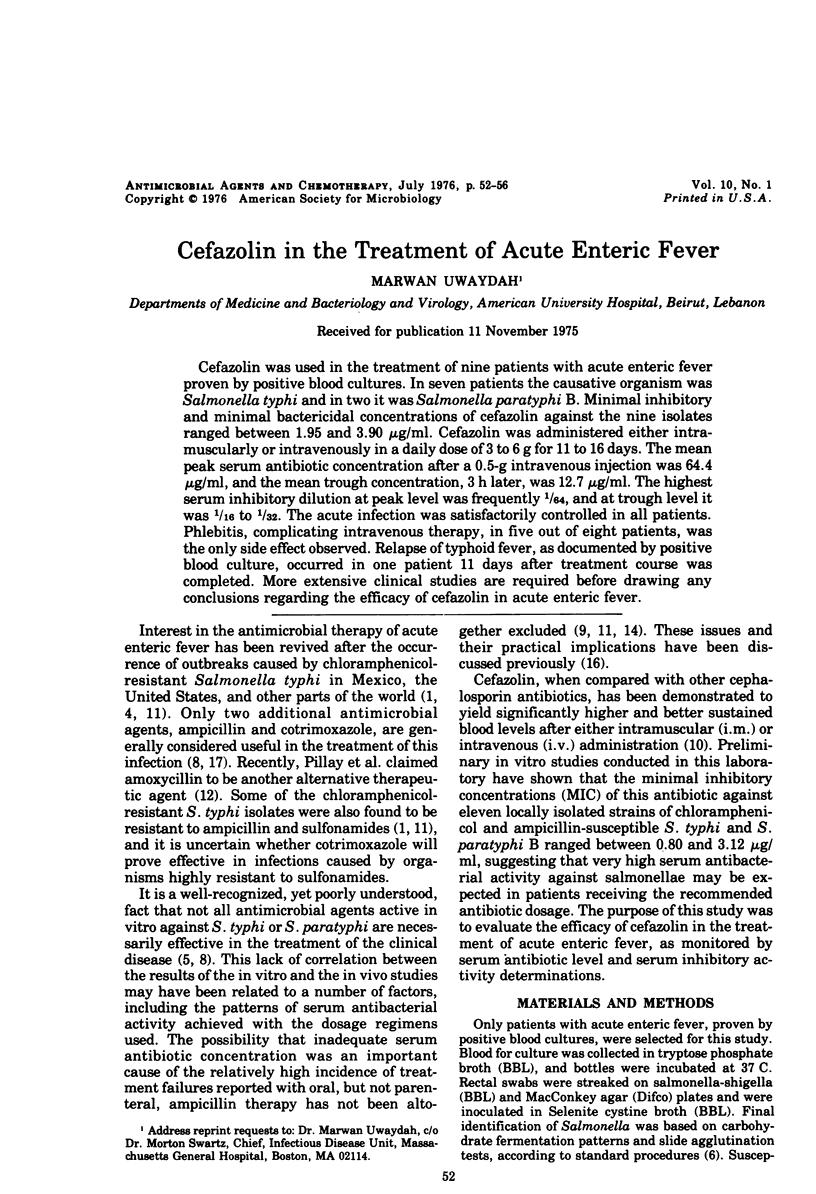
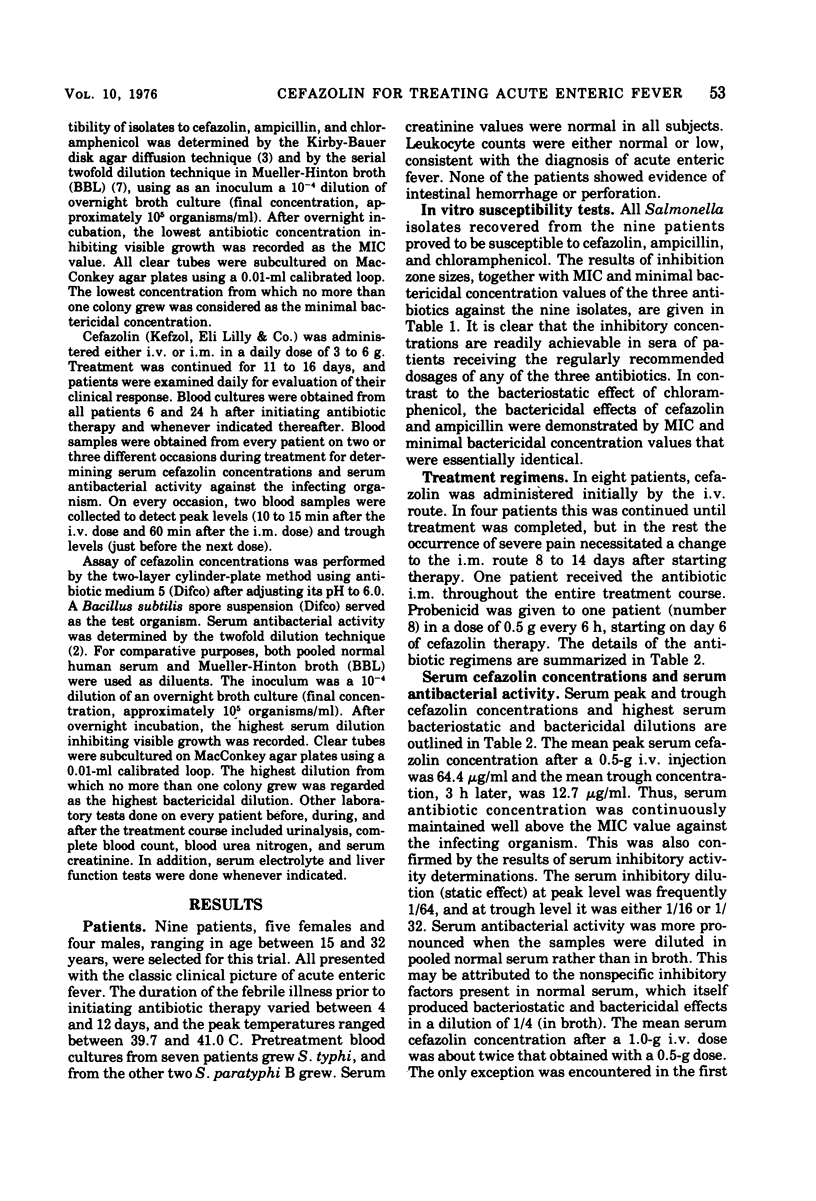
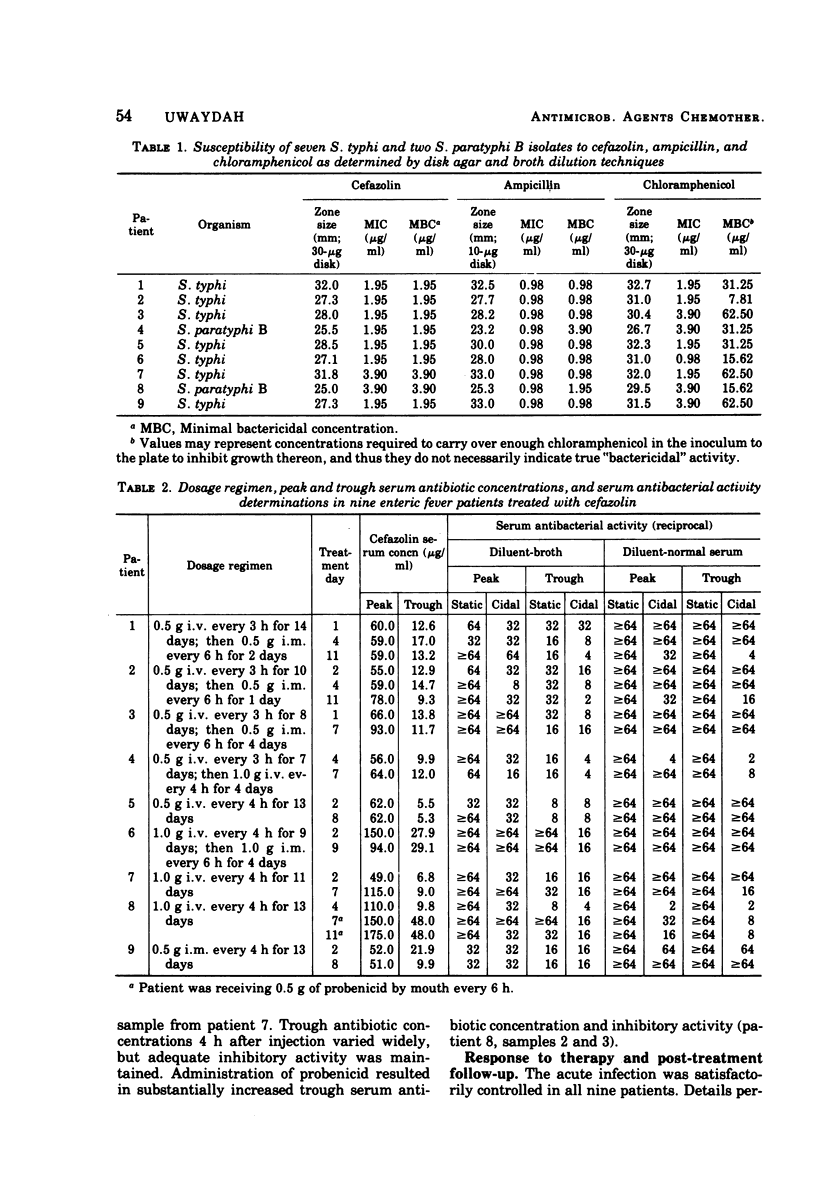
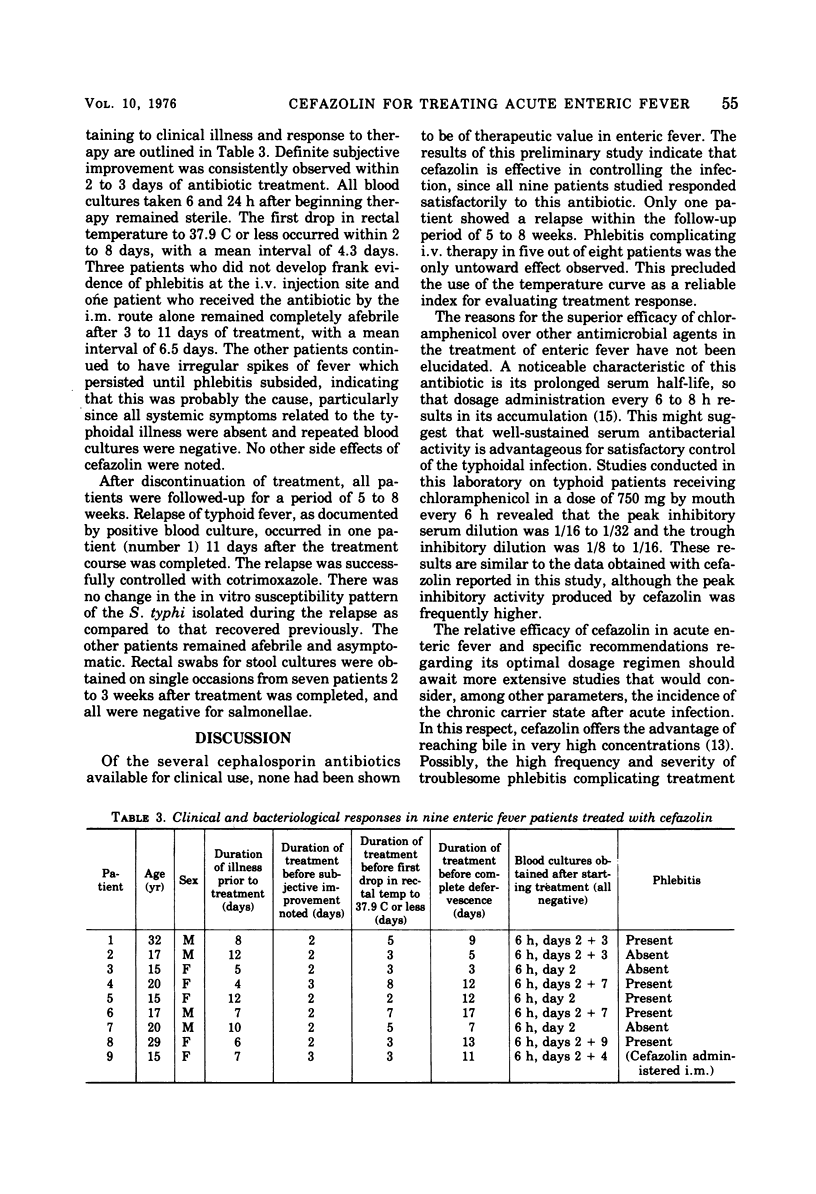
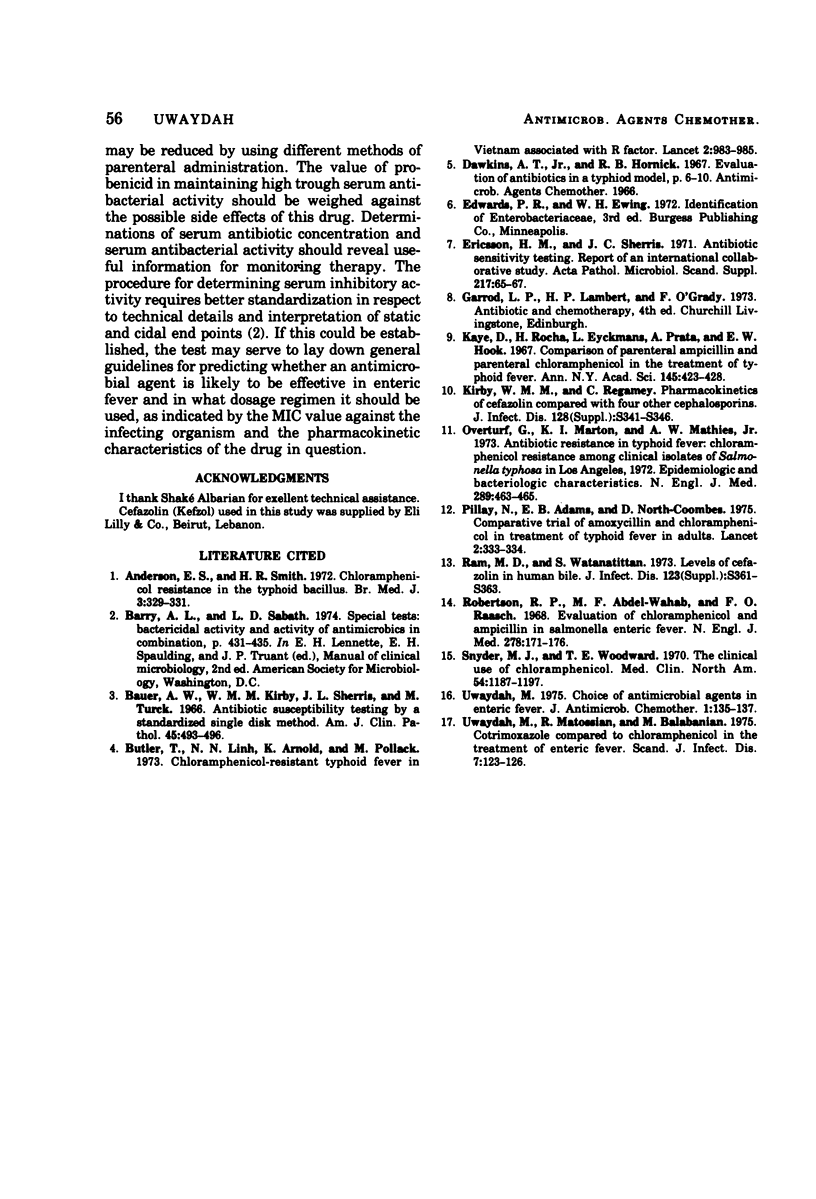
Selected References
These references are in PubMed. This may not be the complete list of references from this article.
- Anderson E. S., Smith H. R. Chloramphenicol resistance in the typhoid bacillus. Br Med J. 1972 Aug 5;3(5822):329–331. doi: 10.1136/bmj.3.5822.329. [DOI] [PMC free article] [PubMed] [Google Scholar]
- Bauer A. W., Kirby W. M., Sherris J. C., Turck M. Antibiotic susceptibility testing by a standardized single disk method. Am J Clin Pathol. 1966 Apr;45(4):493–496. [PubMed] [Google Scholar]
- Butler T., Linh N. N., Arnold K., Pollack M. Chloramphenicol-resistant typhoid fever in Vietnam associated with R factor. Lancet. 1973 Nov 3;302(7836):983–985. doi: 10.1016/s0140-6736(73)91086-6. [DOI] [PubMed] [Google Scholar]
- Kaye D., Eyckmans L., Rocha H., Prata A., Hook E. W. Comparison of parenteral ampicillin and parenteral chloramphenicol in the treatment of typhoid fever. Ann N Y Acad Sci. 1967 Sep 27;145(2):423–428. doi: 10.1111/j.1749-6632.1967.tb50241.x. [DOI] [PubMed] [Google Scholar]
- Kirby W. M., Regamey C. Pharmacokinetics of cefazolin compared with four other cephalosporins. J Infect Dis. 1973 Oct;128(Suppl):S341–S346. doi: 10.1093/infdis/128.supplement_2.s341. [DOI] [PubMed] [Google Scholar]
- Pillay N., Adams E. B., North-Coombes D. Comparative trial of amoxycillin and chloramphenicol in treatment of typhoid fever in adults. Lancet. 1975 Aug 23;2(7930):333–334. doi: 10.1016/s0140-6736(75)92776-2. [DOI] [PubMed] [Google Scholar]
- Ram M. D., Watanatittan S. Levels of cefazolin in human bile. J Infect Dis. 1973 Oct;128(Suppl):S361–S363. doi: 10.1093/infdis/128.supplement_2.s361. [DOI] [PubMed] [Google Scholar]
- Robertson R. P., Wahab M. F., Raasch F. O. Evaluation of chloramphenicol and ampicillin in salmonella enteric fever. N Engl J Med. 1968 Jan 25;278(4):171–176. doi: 10.1056/NEJM196801252780401. [DOI] [PubMed] [Google Scholar]
- Snyder M. J., Woodward T. E. The clinical use of chloramphenicol. Med Clin North Am. 1970 Sep;54(5):1187–1197. [PubMed] [Google Scholar]
- Uwaydah M. Choice of antimicrobial agents in enteric fever. J Antimicrob Chemother. 1975 Jun;1(2):135–137. doi: 10.1093/jac/1.2.135. [DOI] [PubMed] [Google Scholar]
- Uwaydah M., Matossian R., Balabanian M. Co-trimoxazole compared to chloramphenicol in the treatment of enteric fever. Scand J Infect Dis. 1975;7(2):123–126. doi: 10.3109/inf.1975.7.issue-2.08. [DOI] [PubMed] [Google Scholar]


